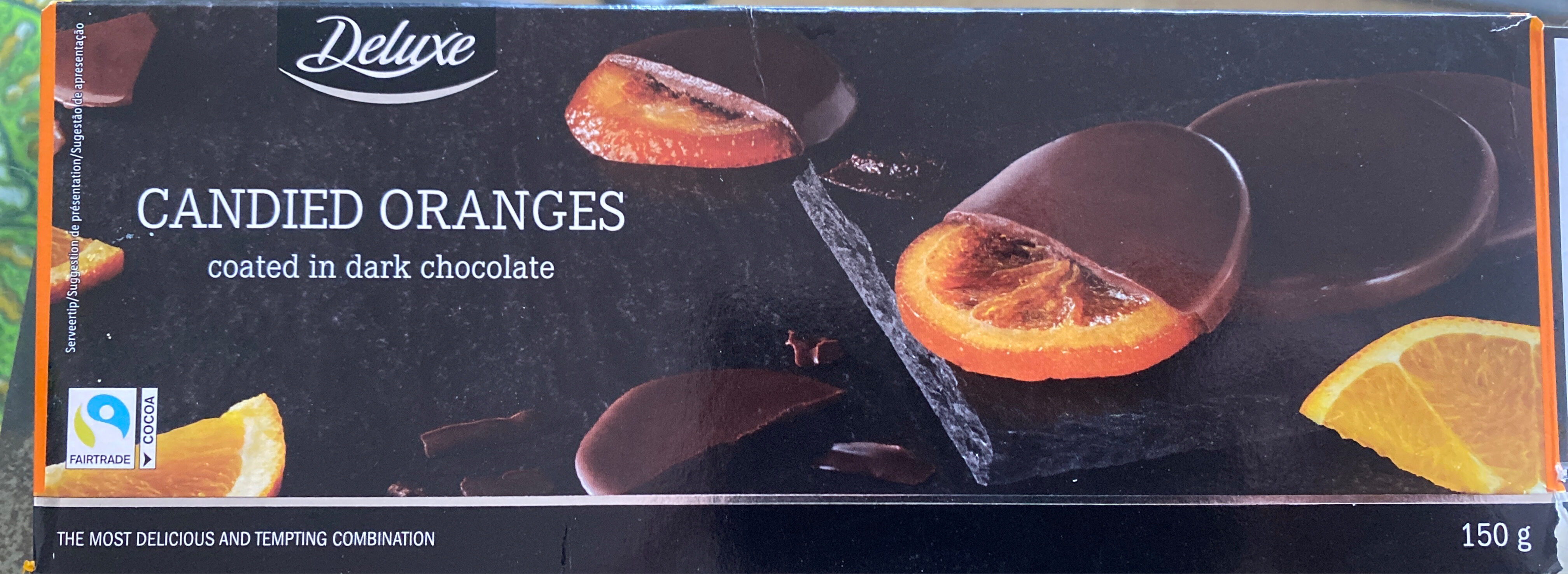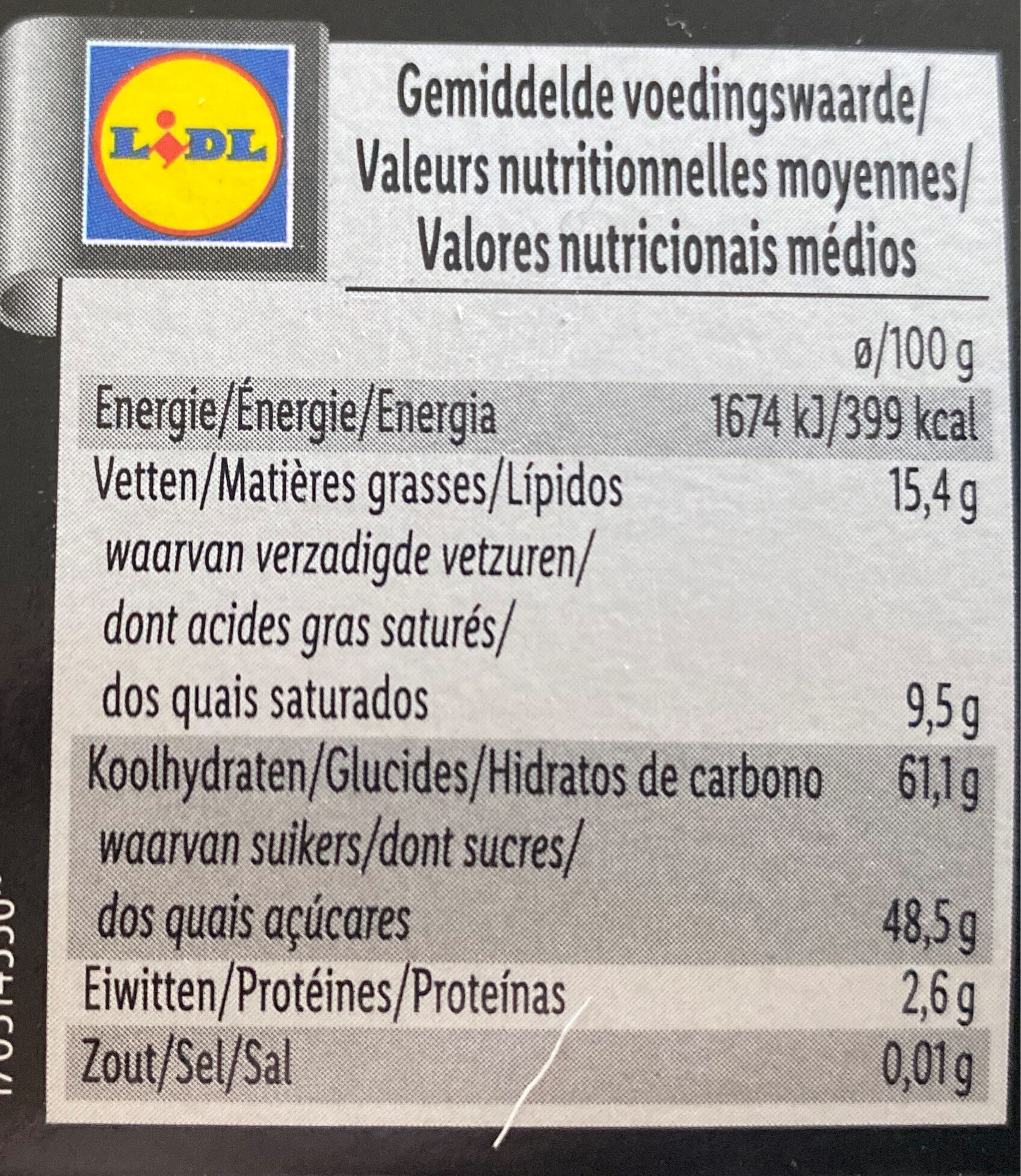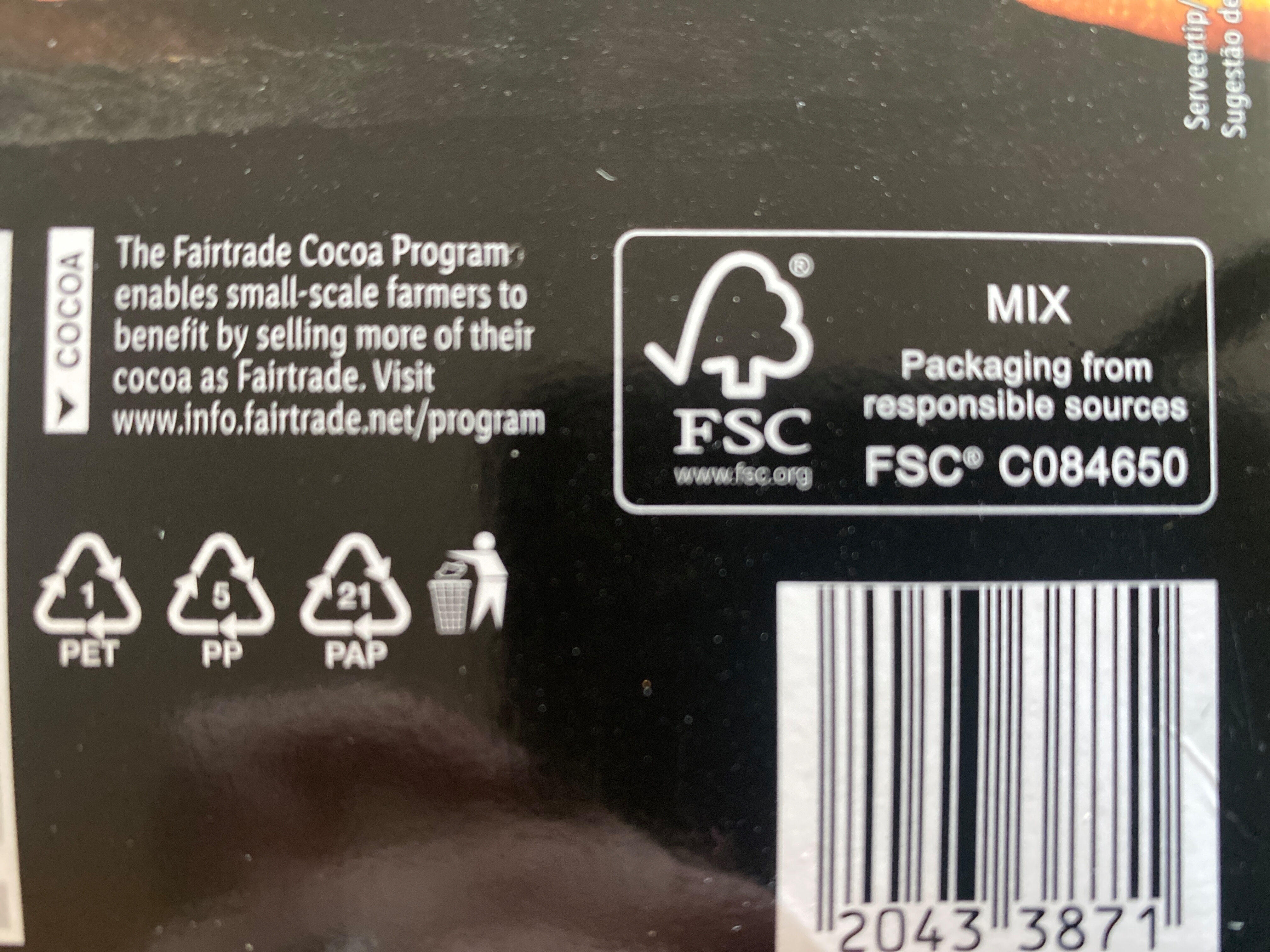Naranjas confitadas bañadas en chocolate negro - Deluxe - 150 g (6 x 25 g)
Ambiguous barcode: This product has a Restricted Circulation Number barcode for products within a company. This means that different producers and stores can use the same barcode for different products.
×
This product page is not complete. You can help to complete it by editing it and adding more data from the photos we have, or by taking more photos using the app for Android or iPhone/iPad. Thank you!
×
Barra-kodea: 20433871
Izen arrunta: Naranjas confitadas bañadas de chocolate negro (Cacao: 48% mínimo. en el chocolate)
Kopurua: 150 g (6 x 25 g)
Ontziratzea: en:Plastic, en:Box, en:container
Markak: Deluxe
Kategoriak: en:Snacks, en:Sweet snacks, en:Cocoa and its products, en:Confectioneries, en:Chocolate candies, en:Bonbons, en:Fruit confectioneries, en:Chocolate covered fruits, fr:FSC, fr:Fairtrade
Etiketak, ziurtagiriak, sariak:
en:No gluten, en:Sustainable farming, en:Green Dot, UTZ Certified, UTZ Certified Cocoa

Manufacturing or processing places: España
Traceability code: FSC-C084650
Dendak: Lidl
Saltzen diren herrialdeak: Espainia
Matching with your preferences
Report a problem
Datuen iturria
Product added on by javichu
Last edit of product page on by roboto-app.
Produktuaren orria -gatik editatua kiliweb, moon-rabbit, musarana, nanouchka, neptuno, packbot, thaialagata, yuka.UTUxUUtLTUNxZjlSbzlzSDBFLy8wL1F0MWI3MFJUeVFCN01PSVE9PQ, yuka.sY2b0xO6T85zoF3NwEKvln1MQ9jkiWz1Zi36yGez-uzfD8y4XN1iy9TjKqs.














